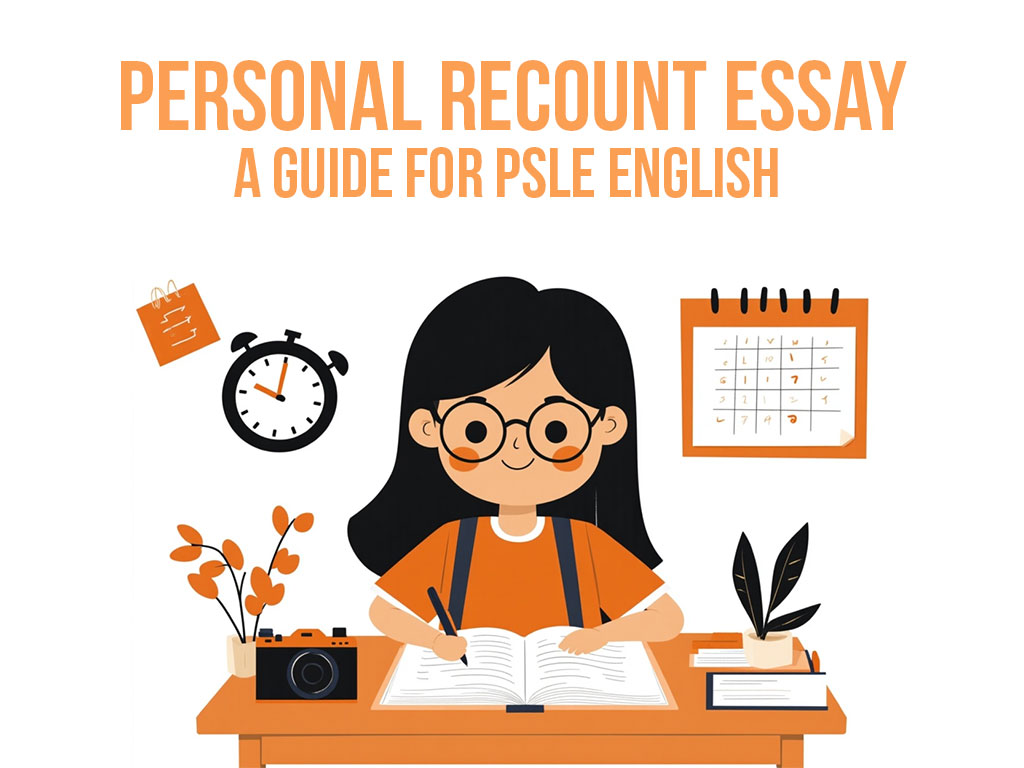Is your child struggling with Personal Recount essays? Don't worry, they're not alone. Many Primary School students are challenged by this writing format, and have trouble translating their experiences into compelling narratives.
This article is designed to help explain the basics of Personal Recount essays, providing clear explanations and practical strategies to help your child excel in their English Paper 1. With our structured approach, your child will gain the confidence and skills needed to craft well-organised and compelling responses, and ace their PSLE English essay writing with ease.
What are Personal Recount Essays?
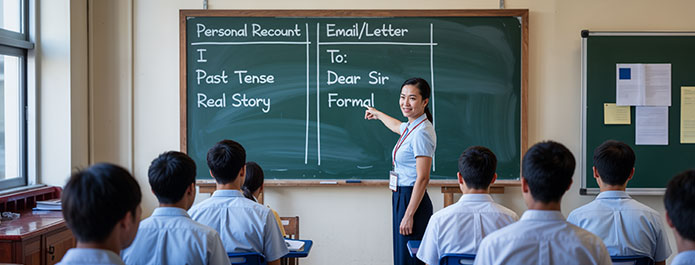
Personal Recount essays fall under the Continuous Writing part of the PSLE Paper 1, which comes after completing the Situational Writing essay. In this section, students are asked to write about a real-life experience, and have to respond to a non-fictional prompt. Some examples of questions are:
The focus is on recounting events in a clear, engaging, and structured way. Students are often being tested on:
Personal Recount vs Narrative
Personal Recount differs from Narrative writing in several ways. It is important for students to be able to identify them, so they can choose the one they find manageable to answer.
Personal Recount | Narrative | |
|---|---|---|
Purpose | To retell a real or imagined personal experience that focuses on reflection, learning, and inner thoughts. | To tell a story (real or imagined) that entertains, informs, or engages with the prompt. |
Perspective | Always written in the first person (I, my). | Can be written in first person or third person (He, she, they). |
Prompt | Often begins with “Write about a time when…” or similar phrases. | Can be more open-ended, sometimes based on a theme, a situation, or a picture. |
Step 1: Planning

After a student chooses to write a Personal Recount essay, the first step is to plan out the flow of their work. They often need to come up with a response to the question, and think about any relevant events in their life that they could write about directly. For example, a student given the topic: “Describe a memorable family celebration" would have to think about the following questions:
Once your child has come up with the answers to these questions, they can begin planning out how they will get to the ending. The essay can be organised like so:
Introduction | Set the scene and introduce what the event is. Should include a hook to get the reader's attention. |
Body Paragraph | Describe specific parts of the event, from start to finish. This is where the writer should be using their skills to tell a compelling story. |
Conclusion | End off the essay with final thoughts, and a reflection on the experience. |
Do Personal Recounts Have to be Real Events?
This is a common point of confusion for many students. Some are surprised by the idea of writing a personal recount about something that didn’t actually happen to them. It can feel strange to call a story “personal” when it isn’t real, and this may cause some students to forego an easy prompt just because they have not experienced it in real life.
The good news is: No, personal recounts do not have to be about real events. In an exam setting, you are allowed to make up a story or add fictional details to make your essay more interesting or meaningful. What matters most is that your writing sounds realistic and believable, as if the experience could actually happen to you.
Step 2: Introduction
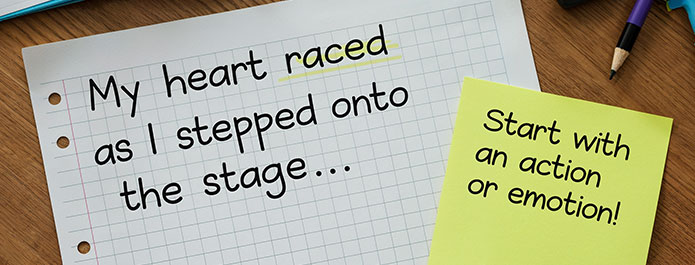
Now that the planning stage is done, it's time to move on to the introduction. Students need to set the scene effectively, and should be getting the reader's attention during this portion of the essay. Your child should begin writing using an introductory Hook.
What is a Hook?
A hook is a sentence that draws the reader in, such as a striking statement, a question, or a vivid description. This should be followed by a brief mention of what the event or experience was about, without giving away too many detail.
A hook is meant to:
Some examples are:
Prompt: Write about a time when you made a mistake and learned something important from it.
Hook:
"I never imagined that one simple mistake could change my whole day."
What it does: This statement grabs attention by hinting at a problem, making the reader curious about what happened and how things changed.
Prompt: Write about a time when you lost something or someone important to you.
Hook:
"Have you ever lost something so important that you felt your heart sink?"
What it does: This hook immediately involves the reader by asking a relatable question, encouraging them to connect their own experiences to the essay.
Prompt: Describe a memorable family celebration.
Hook:
"The smell of freshly baked cake filled the air as my family crowded into the kitchen, all waiting for the big surprise."
What it does: This description helps the reader picture the scene and wonder about the “big surprise,” setting the stage for the story.
After the hook is done, the student should spend a few more sentences setting up the scene and providing context, before moving on to the main body.
Step 3: Body
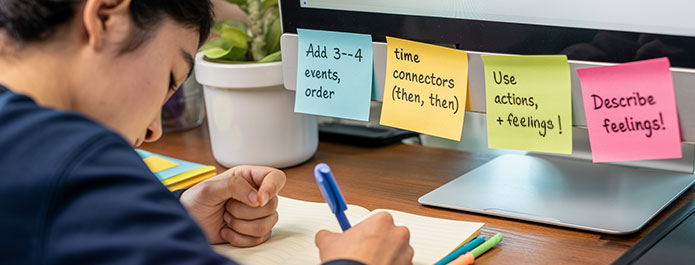
The body paragraphs are where the story can really come to life. This is the part where your child can show off their writing skills, and describe the key events, actions, and feelings, based off the plan they drafted in step 1. When writing the main content of the Personal Recount essay, follow this rough guideline:
Once a student has completed the body text, they will most likely want to conclude the story with a final paragraph that sums up your thoughts and feelings, rather than having it end abruptly during the main body.
Step 4: Conclusion
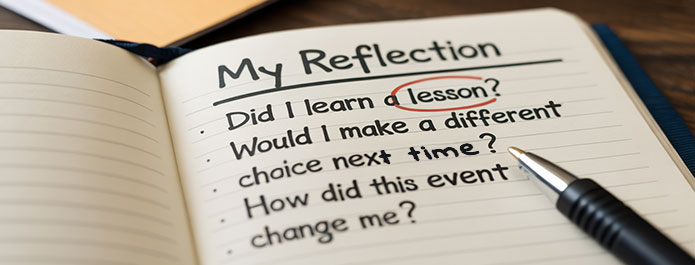
The conclusion is the final point where the writer can leave an impression on the reader. In this section, your child should sum up what happened and, most importantly, share their reflections on the experience. A good conclusion does more than just end the story; it also addresses the initial prompt and shows that your child has meaningfully engaged with the topic throughout the essay.
Example:
"Looking back, I realised that helping my friend that day not only made her smile, but also taught me the value of kindness. I learned that even small actions can make a big difference in someone’s life, and I hope to be just as helpful in the future."
Once your child reaches the conclusion, it is important that they end off the essay conclusively, and that they do not introduce new information. From here, they should check their work and search for any mistakes they may have made in writing, and do so until the end of the allocated timing for the test.
General Tips
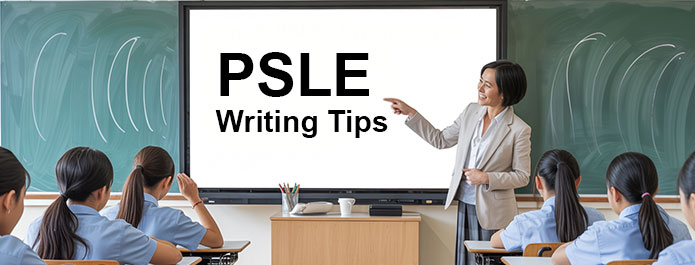
On top of these four steps that lay out the Personal Recount structure, there are several important tips that students need to master, in order to excel at writing in English, and to finish their PSLE Paper 1 with flying colours.
Time Management
Encourage your child to allocate enough time for each stage of the writing process—planning, writing, and checking. For example, they might spend 5–10 minutes planning, 30 minutes writing, and 5–10 minutes reviewing their work. They also need to allocate enough time for the Situational Writing half of the paper, making it crucial to manage this time well. Practising with timed exercises at home can help students get used to this pace.
Show, Not Tell
This piece of writing advice is often given in school. Teach your child to describe actions, thoughts, and feelings vividly instead of just stating them. For example, instead of writing “I was scared,” they could write “My hands trembled and my heart raced as I peeked behind the door.” This draws the reader into the experience and makes the writing more engaging.
Use Your Senses
Good recounts help the reader feel like they’re right there in the moment. Encourage your child to include details about what they saw, heard, smelled, tasted, or touched. For example: “The sweet aroma of chocolate cake filled the room” paints a clearer picture than just saying “The cake smelled nice.”
Ready to Help Your Child Succeed at Personal Recount Essays?

Mastering situational and continual writing can be difficult, but picking up this skill early on will help your child in all aspects of their future education, all the way from their PSLE to their eventual O Level exams.
At Keynote Learning's Primary School English Tuition Classes, we understand the unique challenges students face when honing their English composition skills. Our experienced educators provide personalised guidance, focusing on simplifying complex English concepts and fostering a love for the language. Through our structured curriculum, students gain confidence and improve their writing ability, preparing them to tackle Paper 1 essays with ease.
Keynote Learning offers trial classes to help you assess the right fit for your child's learning needs. Contact us today to learn more about how we can support your child's journey towards English proficiency.

